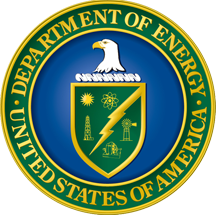Experimental and numerical study of constrained melting of n-octadecane with CuO nanoparticle dispersions in a horizontal cylindrical capsule subjected to a constant heat flux
Journal Name: International Journal of Heat and Mass Transfer
Volume: 67
Issue: 0
Page: 523–534
Year: 2013
List of Authors:
Nabeel S. Dhaidan, J.M. Khodadadi, Tahseen A. Al-Hattab, Saad M. Al-Mashat
Abstract
Constrained melting of n-octadecane as phase change material (PCM) dispersed with CuO nanoparticles as thermal conductivity enhancer (TCE) that was contained and heated in a horizontal cylindrical vessel under a constant heat flux is investigated experimentally and numerically. The experiments entailed recording of temperatures at different radial and angular coordinates inside the test cell, thus allowing
for monitoring the progress of the melting front under various rates of heat flux and multiple nanoparticle weight concentrations. The simultaneous governing conservation equations are solved computationally by utilizing the finite element approach. The computational model is validated and the results showed a good agreement with previous related work. The agreement between the experimental and simulated results is reasonable. The effects of the nanoparticle weight concentration and the amount of applied heat flux (Rayleigh number) on the melting characteristics are examined. The melting process
is characterized by progress of the shape of the solid–liquid interface, melting rate, melt fraction and charging time. The experimental and numerical results reveal that there is an enhancement in melting characteristics with the increase of both nanoparticle loading (intensifying the effective thermal conductivity)
and the Rayleigh number (augmenting the role of natural convection). This enhancement in the
melting process can be indicated by increasing the melting rate which leads to acceleration of the melting time. In early stages of melting, conduction is dominant leading to concentric isotherms and high melting rate. As time progresses, natural convection will develop and increase the melting rate in the top region of
the cylindrical container. On the other hand, melting at the bottom region is governed by conduction and secondary recirculation flow due to thermal instabilities which are recorded by waviness of the interface there. The melt fraction, melting rate and rate of enhancement in charging time are improved with the increasing of the Rayleigh number. Additionally, the rate of acceleration of melting is comparably high for low nanoparticle concentration and it will degrade as the amount of nano-additives increases as the augmentation effect of viscosity, agglomeration and precipitation may be negating the enhancement in thermal conductivity.
